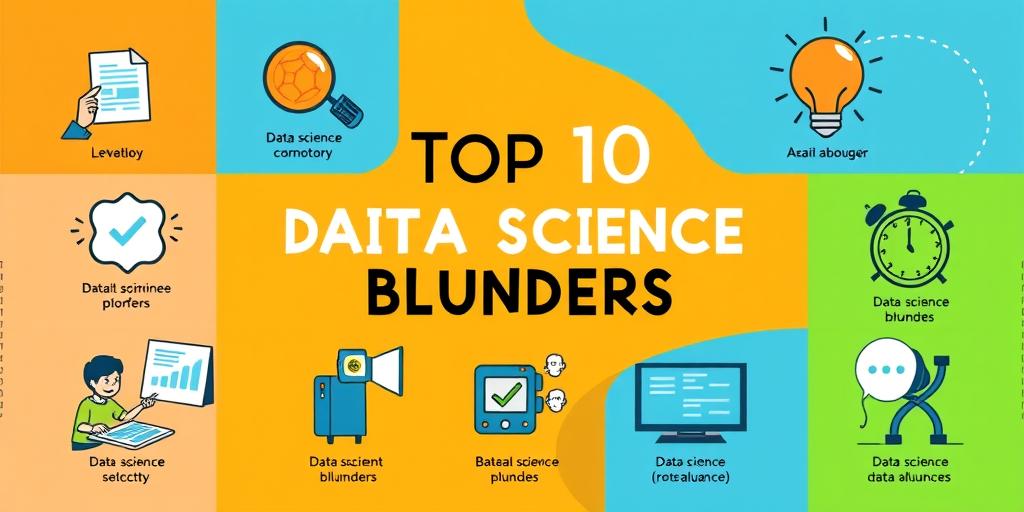Have you ever wondered what could possibly go wrong in the world of data science? Prepare to be amazed (and maybe a little horrified) because today, we’re diving headfirst into the top 10 data science blunders so unbelievable, you won’t believe they actually happened! From colossal coding catastrophes to mind-boggling misinterpretations, we’ve got the lowdown on the epic fails that even the most seasoned data scientists have stumbled upon. Get ready for a wild ride as we explore the unexpected pitfalls of working with big data, and learn how to avoid these common mistakes yourself. Buckle up, data enthusiasts – it’s going to be a bumpy ride!
1. The Curse of the Biased Dataset: When Your Data Lies
One of the most common (and arguably devastating) mistakes in data science is using a biased dataset. A biased dataset is one that doesn’t accurately reflect the real-world population it’s supposed to represent. This can lead to flawed models that make inaccurate predictions. Imagine using historical data on loan applications that mostly include people from a single demographic. The resulting algorithm could be unfairly biased against other demographics during future loan applications, perpetuating societal inequalities. This is where careful data collection and rigorous validation is critical! Ensuring data diversity is key to preventing your analysis from inadvertently making generalizations that could harm specific groups or populations.
Identifying and Mitigating Bias
Tackling bias requires a multi-pronged approach. Firstly, actively seek out and include data from diverse sources. Consider the source of your data—it can sometimes carry inherent biases from the methods used to collect and record it. Second, employ statistical techniques designed to detect and correct for bias, such as weighting samples or using advanced modeling techniques like causal inference. Finally, constantly review your data for potential biases during every stage of the data science lifecycle. Remember, even the slightest bias can have massive consequences!
2. Overfitting: When Your Model Loves Your Training Data Too Much
Overfitting is a situation where your model fits the training data exceptionally well, but performs poorly on new, unseen data. It’s like a student memorizing the answers to a test instead of understanding the underlying concepts. The model becomes too specialized to the training set and fails to generalize to other data points. This often happens when your model is overly complex or you have too little training data. Imagine training a model to identify cats versus dogs using only images of Persian cats and Great Danes. This model might perform flawlessly on the training data, but would likely fail when confronted with other breeds of cats and dogs. Therefore, proper model selection, regularization, and cross-validation are crucial.
Regularization Techniques to Avoid Overfitting
Regularization techniques, like L1 and L2 regularization, are important methods to help mitigate overfitting. These techniques add penalties to the model’s complexity, discouraging it from becoming overly intricate and preventing it from becoming so specialized in fitting the training data. Cross-validation techniques, such as k-fold cross-validation, also help to give a more robust and generalized assessment of model performance.
3. The Danger of Ignoring Missing Data
Missing data is a pervasive problem in data science. Simply ignoring it is a dangerous mistake that can lead to biased results and unreliable conclusions. Missing data can be systematic or random. Systematic missing data indicates a pattern of missing values that is related to the other variables in the data set, while random missing data implies that the missing values are not related to other variables. The most critical step is to first understand why data is missing. Sometimes, imputation techniques are helpful; however, not all imputation techniques are appropriate for all situations. It’s essential to understand the mechanisms generating the missing data before choosing an imputation technique. This is crucial to ensure that the analysis and conclusions are still valid.
Effective Missing Data Handling Strategies
Dealing with missing data is usually a multifaceted issue. Several approaches exist. These can range from simple techniques such as removing rows or columns containing missing data, to more complex techniques like imputation. Imputation uses statistical methods to fill in missing values, either with means, medians, or more sophisticated predictive models. Advanced techniques involve multiple imputation, which generates several imputed datasets that account for the uncertainty introduced by missing values. The best approach depends on the context and the type of missing data.
4. The Pitfalls of Misinterpreting Correlation and Causation
One of the most common errors in data science is mistaking correlation for causation. Just because two variables are correlated doesn’t mean one causes the other. Ice cream sales and crime rates, for instance, may both be high in the summer, but increased ice cream sales don’t cause more crime. This is a classic example of a spurious correlation where an external factor (temperature) is influencing both variables, creating the illusion of a direct causal relationship. Always employ critical thinking and consider various confounding variables that may affect your analysis.
Causal Inference Techniques
To establish causality, you need to look at experimental studies using techniques like randomized controlled trials or A/B testing. Observational studies, while common and practical, have inherent limits, as they only show correlations, not necessarily the underlying mechanisms and causal relationships. Employing advanced causal inference techniques, such as propensity score matching, helps mitigate confounding effects.
Avoid these pitfalls, and your data science endeavors will be much more successful and insightful! What other data science blunders have you encountered? Share your experiences in the comments below!




